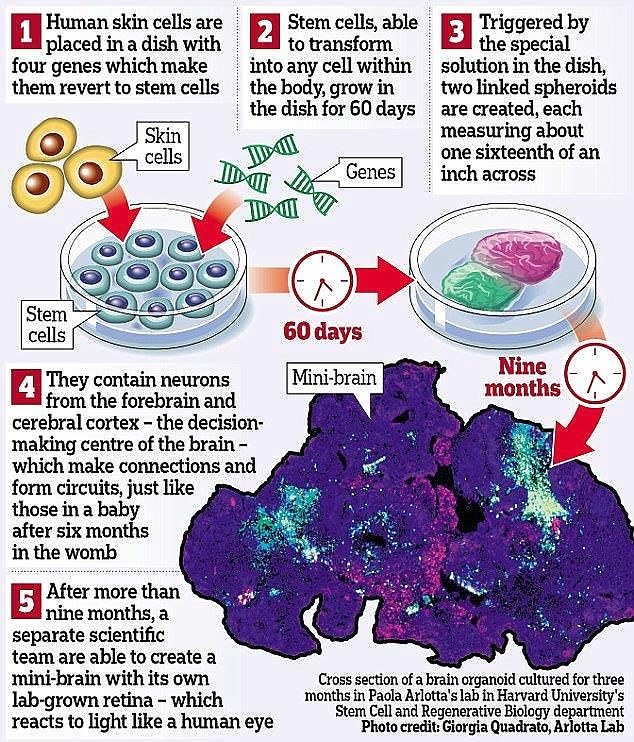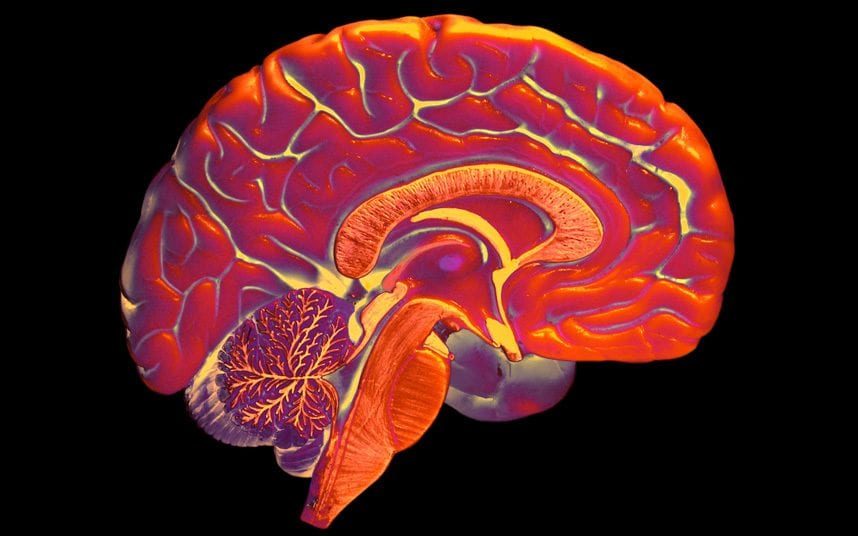The tiny organs are being grown in a laboratory by British scientists who believe they will one day be able to use them to grow new brain tissue.
The process involves transforming skin cells into neurons, which are then 3D-printed into structures that resemble the brain.
The treatment, if successful, would not be able to reverse memory loss that has already occurred but it could stop further deterioration.
Researchers at Aston University in Birmingham are initially hoping to use the artificially created structures to test treatment methods for dementia and speed up drug development.
The micro-brains are created by genetically altering skin cells, which causes them to revert to stem cells that are capable of becoming any type of cell.
They are then triggered into growing into neurons.
The structures currently only grow to around 2mm (0.08 inches), but they could help scientists to see how dementia takes hold of brain cells and spreads.
The work may eventually allow the team to grow replacement brain parts for transplanting into Alzheimer's patients.
Speaking to The Telegraph, Professor Edik Rafalov of the university said: 'This is kind of science fiction.
'We're trying to help neurons to connect and to grow together so that, ultimately, we can replace parts of the brain that have been damaged by, for example, dementia.
'In simple terms, with dementia, part of the brain is not working properly. If you can replace this part, then you can return people to a normal life.
'It's no exaggeration to say the project could improve and prolong hundreds of thousands of lives.'
Alzheimer's disease is the most common type of dementia. Worldwide, nearly 44 million people have Alzheimer's or a related dementia.
Dementia is a progressive neurological disease which affects multiple brain functions, including memory.
The exact cause of Alzheimer's disease is unknown, although a number of things are thought to increase your risk of developing the condition.

Dr Eric Hill, programme director for MSc stem cells and regenerative medicine at Aston, said: 'This work is incredibly exciting - we're making something that acts like real brain tissue.
'But we face some real challenges, beyond the difficulties of creating human brain tissue, and conditions such as Alzheimer's present themselves in older patients, so we need to find a way of accelerating the ageing process in our laboratory brains so we can understand how the diseases work.'
This is not the first time that stem cells have been used to grow artificial brain tissue.
In April, researchers at Stanford University grew two forebrain circuits, measuring only a sixteenth of an inch across, using only human skin cells.
Scientists hope to use the mini-brains to watch in real time the triggers for epilepsy, when brain cells become hyperactive, and autism, where they are thought to form bad connections.
Then scientists at Harvard University went a step further, growing a mini-organ for more than nine months to create a human retina - the light-sensitive lining at the back of the eye.




Reader Comments